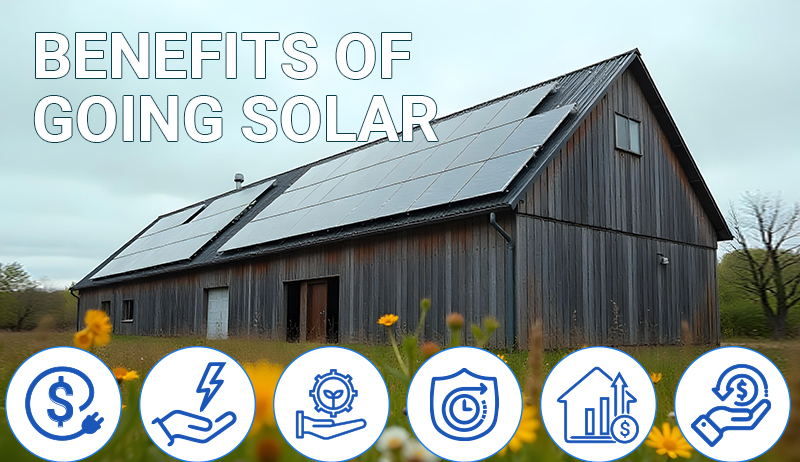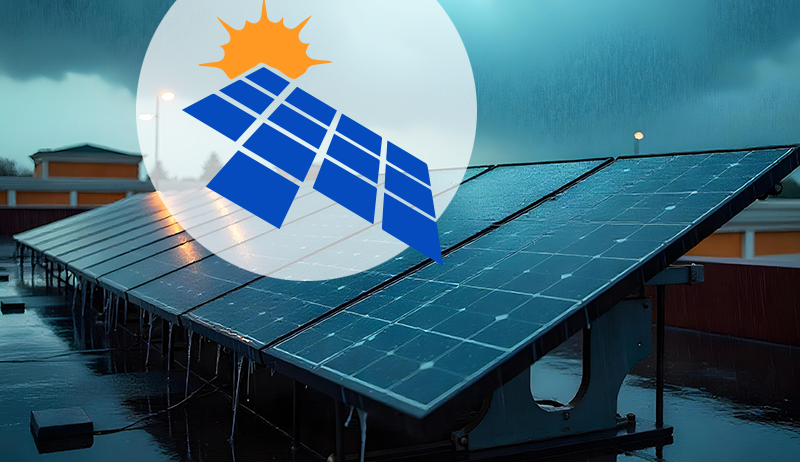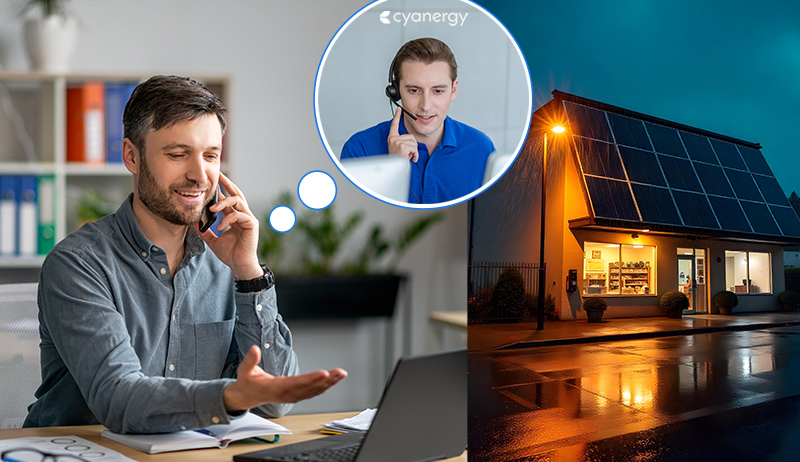Introduction Africa Wind Energy Landscape
Africa has vast potential for wind energy, and it’s becoming a bright spot in the continent’s energy landscape.
Across the vast plains and coastlines of Africa, a new energy source is stirring – wind power. The continent boasts some of the world’s most impressive wind resources, particularly in the east and north, where countries like Ethiopia, Kenya, and Morocco showcase exceptional wind potential. These strong, consistent winds hold the key to unlocking a clean, sustainable energy future for Africa, a continent grappling with growing energy demands and a desire to move away from reliance on fossil fuels.
Leading the charge in this wind energy surge are several African nations. Egypt, Morocco, and South Africa have emerged as frontrunners, boasting impressive wind farm development projects that are paving the way for others. With over 140 additional wind power projects currently in various stages of development across the continent, Africa is poised to become a global leader in wind energy production. Harnessing this abundant natural resource has the potential to transform Africa’s energy landscape, bringing clean, reliable power to millions and fostering a more sustainable future for the continent.
Here is Africa Wind Energy Opportunity:
-
Strong Wind Resources: Particularly in Eastern and Northern Africa, countries like Chad, Morocco, and Djibouti have excellent wind potential.
-
Growth on the Rise: With an existing capacity of around 9 gigawatts, wind power is already playing a role. This is expected to soar by 900% in the coming years.
-
Leaders in Wind Energy: Currently, Egypt, Morocco, and South Africa are leading the way in wind farm development.
-
Future is Bright: With over 140 wind power projects in development, wind energy is poised to be a major contributor to Africa’s future energy mix.
Africa Wind Energy Landscape: Statistic Data
Here’s a breakdown of some key statistics on Africa’s wind energy landscape:
Capacity:
- Total Installed Capacity: Approximately 9 gigawatts (GW) (as of 2023, data may vary depending on source)
- Projected Growth: 900% increase in wind power capacity in the coming years
Leaders in Wind Energy:
- Top Countries: Egypt, Morocco, South Africa
Development:
- Number of Projects in Development: Over 140 wind power projects
Resources:
- High Wind Potential Regions: Eastern and Northern Africa (countries like Ethiopia, Kenya, Djibouti, Chad, Morocco)
Additional Points to Consider:
- Public and private investments are crucial for further growth.
- Wind energy can contribute to achieving decarbonization goals and reducing reliance on fossil fuels.
- Expanding wind power can bring clean and reliable electricity to millions in Africa.
Africa Wind Energy Landscape: Wind Farm Projects
Africa Wind Energy Landscape: Wind Farm Projects by Country
While a comprehensive list of every wind farm project in Africa would be quite extensive, here’s a breakdown of the leading countries with notable wind farm projects:
North Africa:
-
Morocco: A leader in African wind energy, Morocco boasts several large-scale projects, including the gigantic upcoming 4.5 GW wind farm development ([source needed on Moroccan wind farm development]). Others include:
- Jbel Chadou Wind Farm (120 MW)
- Foum El Ouid Wind Farm (50 MW)
-
Egypt: With ambitious renewable energy targets, Egypt has several operational wind farms, including:
- Gulf of Suez Wind Farm (250 MW)
- Jabal Zayt Wind Farm (52 MW)
Southern Africa:
- South Africa: A historic leader in African wind power, South Africa has a well-developed wind farm network, including:
- Cookhouse Wind Farm (138 MW)
- Noordoeolus Wind Farm (100 MW)
- Jeffreys Bay Wind Farm (138 MW)
East Africa:
- Kenya: East Africa’s wind power leader boasts impressive projects like:
- Lake Turkana Wind Farm (310 MW) – One of Africa’s largest wind farms
- Kipeto Wind Farm (100 MW)
Other Notable Countries:
-
Ethiopia: With vast wind potential, Ethiopia has projects underway like:
- Ashegoda Wind Farm (120 MW)
-
Senegal: Taking its first steps in wind energy, Senegal has projects like:
- Taiba N’Diaye Wind Farm (158 MW)
Africa Wind Energy Landscape: Wind Farm Technology
Africa’s wind energy sector is leveraging a range of wind farm technologies to harness its impressive wind resources. Here’s a breakdown of some key aspects:
Dominant Technology:
- Horizontal-Axis Wind Turbines (HAWTs): These are the most common type of wind turbine used globally, and they dominate Africa’s wind farm landscape as well. HAWTs consist of a tall tower with a horizontal rotor that spins in the wind, generating electricity.
Turbine Size and Capacity:
- Focus on Mid-Sized Turbines: Due to factors like grid capacity and infrastructure limitations in some regions, Africa tends to utilize mid-sized turbines with capacities ranging from 2-3.6 megawatts (MW).
- Shift Towards Larger Turbines: As grid infrastructure improves and project financing becomes more accessible, there’s a growing trend towards deploying larger turbines with capacities exceeding 4 MW in some areas.
Technological Advancements:
- Focus on Efficiency and Reliability: Technological advancements are leading to more efficient turbines with improved blade designs and advanced control systems. This translates to higher energy production and better performance even in variable wind conditions.
- Adapting to Local Conditions: Manufacturers are increasingly developing turbines that cater to specific African conditions, such as high temperatures and dust. This ensures optimal performance and reliability in the continent’s diverse environments.
Emerging Technologies:
- Small Wind Turbines: While less common at utility-scale wind farms, small wind turbines are gaining traction in some areas for mini-grid applications or providing power to remote communities.
Considerations for Future Development:
- Technology Transfer and Local Manufacturing: Encouraging technology transfer and establishing local manufacturing capabilities for wind turbine components can create jobs and reduce reliance on foreign imports.
- Integration with Storage Solutions: As wind energy is a variable resource, integrating wind farms with battery storage solutions can help stabilize the grid and ensure a more reliable power supply.
Africa’s wind energy sector is adopting a combination of proven and evolving technologies to maximize its wind resource potential and contribute to a clean energy future.
Africa Wind Energy Landscape: Financial Support
Developing Africa’s wind energy potential requires significant financial backing. Here’s a look at the current landscape and future needs:
Current Funding Sources:
-
Public Finance: National governments in Africa are increasingly investing in renewable energy, with wind power a key beneficiary. This includes funds allocated for grid upgrades and project development.
-
International Development Finance Institutions (DFIs): Organizations like the World Bank, African Development Bank (AfDB), and others play a crucial role by providing loans, grants, and technical assistance for wind energy projects.
-
Private Investments: Private investors are showing growing interest in African wind energy, recognizing the potential for high returns and positive environmental impact. This includes commercial banks, pension funds, and independent power producers (IPPs).
Challenges and Opportunities:
-
High Upfront Costs: Wind farm projects require significant upfront investments for turbines, infrastructure, and grid upgrades. This can be a hurdle for some developers.
-
Currency Fluctuations and Political Risk: Currency fluctuations and political instability in some regions can deter investors.
-
Unlocking Private Capital: Creating a more attractive environment for private investors is crucial. This involves measures like streamlined permitting processes, currency hedging instruments, and long-term power purchase agreements.
Innovative Financing Mechanisms:
-
Green Bonds: Issuing green bonds specifically designated for renewable energy projects can attract a wider pool of investors.
-
Public-Private Partnerships (PPPs): Collaboration between public and private entities can help share risks and leverage resources for wind farm development.
-
Carbon Credits: Trading carbon credits generated by wind farms can provide additional revenue streams for project developers.
The Future of Financial Support:
-
Blended Finance: Blending public and private capital can be a powerful tool to bridge the financing gap and make wind projects more attractive to investors.
-
Focus on De-risking: Implementing policies and mechanisms that mitigate risks for investors will be vital for attracting more private capital.
-
Building Local Capacity: Developing a skilled workforce and fostering domestic financial institutions can create a more sustainable financial ecosystem for African wind energy.
By diversifying funding sources and implementing innovative financing mechanisms, Africa can unlock the full potential of its wind energy resources and accelerate its clean energy transition.
Africa Wind Energy Landscape: International Collaboration
International collaboration plays a crucial role in propelling Africa’s wind energy sector forward. Here’s a breakdown of the key aspects of this collaborative effort:
Benefits of Collaboration:
-
Technology Transfer and Knowledge Sharing: Collaboration with developed nations allows African countries to access advanced wind turbine technologies, best practices in wind farm development, and operation & maintenance expertise.
-
Financial Support: International partnerships can unlock new sources of funding through joint ventures, concessional loans from development banks, and knowledge sharing on innovative financing mechanisms.
-
Capacity Building: Collaborative initiatives can provide training programs for African engineers, technicians, and project managers, fostering a skilled local workforce for the wind energy sector.
-
Grid Integration and Infrastructure Development: International collaboration can support the development of regional power grids and transmission infrastructure, crucial for integrating large-scale wind farms and ensuring efficient power distribution.
Examples of International Collaboration:
-
Global Wind Energy Council (GWEC): This international organization works closely with African stakeholders to develop the continent’s wind energy sector. Initiatives like the “Africa WindPower” program focus on capacity building, attracting investment, and knowledge sharing.
-
The World Bank and African Development Bank (AfDB): These institutions provide financial and technical assistance for wind energy projects in Africa, often working in collaboration with national governments.
-
Public-Private Partnerships (PPPs): International partnerships involving private companies from developed nations and African governments or developers are facilitating wind farm development across the continent.
-
Knowledge Sharing Platforms: Initiatives like the “Africa-EU Renewable Energy Cooperation Programme” promote knowledge exchange and collaboration between African and European partners on renewable energy development, including wind power.
Looking Ahead:
-
Focus on Just Transition: International collaboration should support a just transition for communities impacted by wind farm development, ensuring they benefit from job creation and skills development opportunities.
-
South-South Cooperation: Collaboration between African countries with established wind energy sectors and those with emerging projects can foster knowledge exchange and accelerate regional development.
-
Focus on Sustainability: International partnerships should promote responsible wind farm development with minimal environmental impact and adherence to best practices for social responsibility.
By strengthening international collaboration through various channels, Africa can leverage global expertise, unlock critical resources, and build a robust wind energy sector that contributes to a sustainable and prosperous future.
Africa Wind Energy Landscape: Largest Wind Farm Established
Here’s the information on the 6 Largest Wind Farms in Africa by installed capacity:
-
Lake Turkana Wind Power Station, Kenya:
- Capacity: 310 MW
- Location: Marsabit County, Kenya
- Significance: Largest wind farm in Africa, provides power to 1.5 million homes
-
Tarfaya Wind Farm, Morocco:
- Capacity: 301 MW
- Location: Tarfaya, Morocco
- Significance: Largest onshore wind farm in Africa
-
Ras Ghareb Wind Farm, Egypt:
- Capacity: 262.5 MW
- Location: Gulf of Suez, Egypt
- Significance: First independent power producer project in Egypt
-
Adama I & II Wind Farm, Ethiopia:
- Capacity: 204 MW (combined)
- Location: Adama, Ethiopia
- Significance: Largest wind farm in Ethiopia
-
West Bakr Wind Project, Egypt:
- Capacity: 250 MW (planned)
- Location: West Bakr, Egypt
- Significance: Under development, upon completion will be among the largest
-
Jaber Wind Farm, Morocco: (This one might replace Akhfenir depending on the source)
- Capacity: 160.7 MW (or)
- Parc Eolien Akhfenir, Morocco: 150 MW (depending on the source)
- Location: Jaber or Akhfenir, Morocco
- Significance: Major wind farm contributing to Morocco’s renewable energy goals
Africa Wind Energy Landscape: Policy and Regulation
Africa has vast potential for wind energy due to its strong wind resources in several regions. To harness this potential, African countries are developing policies and regulations to promote wind energy development. Here’s a breakdown of the key aspects:
Supportive Policy Frameworks:
- National Renewable Energy Targets: Many African countries have set ambitious renewable energy targets in their national energy plans. These targets incentivize wind energy development to contribute to the overall renewable energy mix.
- Feed-in Tariffs (FiTs): Some countries offer FiTs, which guarantee a fixed price for electricity produced from wind farms. This provides financial stability for wind energy projects and attracts investors.
- Renewable Energy Auctions: Another approach is competitive auctions where developers bid for the lowest price to supply renewable energy. This can drive down costs and promote efficiency.
- Tax Incentives: Tax breaks on equipment imports, customs duties, and corporate taxes can make wind projects more financially attractive.
Regulatory Considerations:
- Licensing and Permitting: Streamlined licensing procedures for wind farm development are crucial to expedite project timelines. This may involve dedicated agencies or one-stop shops for approvals.
- Grid Integration: Expanding and strengthening electricity grids are essential to accommodate the variable nature of wind energy and ensure efficient transmission to consumers.
- Environmental Impact Assessments: Balancing wind energy development with environmental concerns is necessary. Regulations ensure responsible siting, minimizing impact on wildlife and habitats.
- Community Engagement: Local communities should be involved in the planning process to address concerns and ensure projects bring social and economic benefits.
Challenges and Opportunities:
- Financing: Securing financing for large-scale wind projects can be challenging. Initiatives like green bonds and development bank support can help bridge the gap.
- Infrastructure: Limited transmission infrastructure in some regions hinders large-scale wind energy integration. Investment in grid expansion is crucial.
- Technical Expertise: Building a skilled workforce for wind farm development, operation, and maintenance is essential for long-term sustainability.
Examples:
- South Africa: A leader in African wind energy with established policies like the Renewable Energy Independent Power Producer Procurement Programme (REIPPPP) that has driven significant wind farm development.
- Morocco: Morocco has set ambitious renewable energy targets and established a regulatory framework promoting wind energy through FiTs and auctions.
Africa Wind Energy Landscape: Private Sector Investment
Private sector investment is crucial for unlocking Africa’s immense wind energy potential. While the continent boasts strong wind resources, translating that potential into reality requires significant financial backing. Here’s a closer look at the role of private investors in African wind energy development:
Why Private Sector Investment Matters:
- Large-Scale Projects: Wind farms require substantial upfront capital, and private companies play a major role in financing these projects.
- Expertise and Innovation: Private investors bring technical expertise, project management skills, and a drive for innovation to wind energy development.
- Risk Sharing: Private sector involvement allows for risk-sharing models, making projects more attractive and financially viable.
Attracting Private Investment:
- Stable Policy Frameworks: Clear, predictable, and long-term government policies regarding renewable energy are essential to attract investors.
- Bankable Projects: Well-structured wind projects with transparent financial models and clear risk mitigation strategies are more likely to secure private funding.
- Currency De-risking Instruments: Mechanisms like currency hedges can mitigate currency fluctuations, a major concern for foreign investors.
Examples of Private Sector Involvement:
- Lake Turkana Wind Power Station (Kenya): This 310 MW wind farm, the largest in Africa, was financed through a consortium of private investors, including KP&P Africa and Aldwych International.
- BTE Renewables (USA): This company has committed to investing $330 million in sustainable energy projects in Africa, including wind power, demonstrating the interest of international players.
Challenges and Opportunities:
- Perceived Risk: Some investors perceive African markets as risky due to factors like political instability and regulatory uncertainty.
- Local Capacity Building: Encouraging local investment and building domestic financial expertise can reduce reliance on foreign capital.
- Public-Private Partnerships (PPPs): Collaboration between governments and private companies can leverage strengths and share risks to accelerate wind energy development.
The Future of Private Sector Investment:
- Focus on Sustainability: Investors are increasingly seeking projects that demonstrate social and environmental responsibility alongside financial returns.
- Technological Advancements: Falling costs of wind turbine technology and battery storage solutions can make wind projects more attractive for private investment.
Private sector investment presents a significant opportunity for unlocking Africa’s wind energy potential. By creating an investor-friendly environment, implementing supportive policies, and fostering innovative partnerships, African countries can harness this renewable energy source for sustainable development.
Africa Wind Energy Landscape: Involvement Companies
The African wind energy sector is witnessing a surge in involvement from various companies, both domestic and international. Here’s a breakdown of the key players:
Independent Power Producers (IPPs):
- These companies develop, finance, own, and operate wind farms. They sell electricity to utilities or directly to consumers through power purchase agreements (PPAs).
- Examples:
- Acwa Power (Saudi Arabia): A major player with wind projects in Morocco and South Africa.
- Enel Green Power (Italy): Has invested in wind farms across Africa, including Ethiopia and Kenya.
- Lekela Power (UK): Focuses on developing and operating utility-scale renewable energy projects in Africa, with wind farms in Senegal and Egypt.
Turbine Manufacturers:
- These companies supply wind turbines, a critical component of wind farms. They may also provide installation and maintenance services.
- Examples:
- Vestas (Denmark): A global leader in wind turbine manufacturing, with a strong presence in Africa.
- Siemens Gamesa (Spain/Germany): Another major wind turbine manufacturer with projects in Africa.
- Ming Yang Smart Energy (China): A growing player in the African wind turbine market.
Engineering, Procurement, and Construction (EPC) Contractors:
- These companies handle the design, procurement of materials, and construction of wind farms.
- Examples:
- Globeleq (UK): An independent power company of the Abraaj Group, involved in EPC projects for wind farms in Africa.
- SGI (South Africa): A South African EPC contractor with experience in renewable energy projects.
- Power Construction Corporation of China (PowerChina): A large Chinese state-owned enterprise undertaking EPC projects in Africa, including wind farms.
Utilities and Distribution Companies:
- These companies purchase electricity from wind farms and distribute it to consumers. Some utilities are also investing directly in wind energy projects.
- Examples:
- Eskom (South Africa): The largest power utility in Africa, which has begun incorporating renewable energy sources like wind power.
- KenGen (Kenya): The largest electricity generation company in Kenya, investing in wind energy alongside traditional sources.
- Office National de l’Electricité et de l’Eau Potable (ONEE) (Morocco): Morocco’s national electricity and drinking water utility, which is integrating wind energy into the grid.
Financial Institutions:
- Banks, development finance institutions, and private equity firms play a crucial role in financing wind energy projects.
- Examples:
- African Development Bank (AfDB): Provides financing and technical assistance for renewable energy projects in Africa.
- International Finance Corporation (IFC): The World Bank’s private sector arm, which invests in renewable energy projects in Africa.
- Standard Bank (South Africa): A major African bank that finances renewable energy projects across the continent.
This list is not exhaustive, but it highlights the diverse range of companies involved in Africa’s wind energy sector. As the sector continues to grow, we can expect to see even more companies entering the market and contributing to the development of this clean energy source.
Conclusion of Africa Wind Energy Landscape
Conclusion: Africa’s Wind Energy on the Rise
Africa possesses tremendous wind energy potential, and the continent is actively taking steps to harness this clean energy source. Supportive government policies, an influx of private sector investment, and the involvement of a wide range of companies are driving the development of wind farms across the continent.
Here are the key takeaways:
- Policy and Regulation: Many African countries are establishing frameworks with renewable energy targets, feed-in tariffs, and streamlined licensing procedures to encourage wind energy development.
- Private Sector Investment: Private companies play a critical role in financing wind projects, bringing expertise, innovation, and risk-sharing models to the table. Creating an investor-friendly environment is crucial.
- Company Involvement: A diverse range of companies are involved, including independent power producers, turbine manufacturers, EPC contractors, utilities, and financial institutions. Each plays a specific role in the wind energy value chain.
Challenges remain, such as securing financing, developing grid infrastructure, and building local technical expertise. However, with continued focus on these areas and technological advancements, Africa’s wind energy sector is poised for significant growth.
The benefits are substantial: Wind energy can contribute to a cleaner and more sustainable energy mix, reduce reliance on fossil fuels, improve energy security, and create jobs and economic opportunities across Africa.
The future of Africa’s wind energy landscape is bright. By overcoming challenges, fostering collaboration, and embracing innovation, African countries can unlock the immense potential of wind energy for a brighter future.
https://www.exaputra.com/2024/03/africa-wind-energy-landscape.html
Renewable Energy
Doing What’s “Right” Is More Controversial than it Seems
 Some of us are looking for a single, simple statement to encapsulate what is going so wrong in America today, and perhaps it relates to what Aristotle says at left here.
Some of us are looking for a single, simple statement to encapsulate what is going so wrong in America today, and perhaps it relates to what Aristotle says at left here.
Even the MAGA folks think that what they’re doing is “right.” By this I mean white supremacy, mass deportation of immigrants (with or without due process), the rejection of science, and so forth.
Renewable Energy
Trump’s Agenda Is Even Far-Reaching Than People May Think
 As Trump’s former lawyer Ty Cobb says at left, in addition to turning the United Stated into an autocratic regime, at the same time, Trump needs to alter history such that future generations don’t think he did anything wrong.
As Trump’s former lawyer Ty Cobb says at left, in addition to turning the United Stated into an autocratic regime, at the same time, Trump needs to alter history such that future generations don’t think he did anything wrong.
Yes, he has his hands full, but he’s assisted by hundreds of traitors in congress, and hundreds of millions of hateful morons in the U.S. electorate.
Renewable Energy
Victoria’s VEU Scheme Introduces New Solar Incentives for C&I Properties
-
Climate Change2 years ago
Spanish-language misinformation on renewable energy spreads online, report shows
-
Climate Change Videos2 years ago
The toxic gas flares fuelling Nigeria’s climate change – BBC News
-
Climate Change2 months ago
Guest post: Why China is still building new coal – and when it might stop
-

 Greenhouse Gases1 year ago
Greenhouse Gases1 year ago嘉宾来稿:满足中国增长的用电需求 光伏加储能“比新建煤电更实惠”
-

 Climate Change1 year ago
Climate Change1 year ago嘉宾来稿:满足中国增长的用电需求 光伏加储能“比新建煤电更实惠”
-
Greenhouse Gases2 months ago
Guest post: Why China is still building new coal – and when it might stop
-

 Carbon Footprint1 year ago
Carbon Footprint1 year agoUS SEC’s Climate Disclosure Rules Spur Renewed Interest in Carbon Credits
-
Renewable Energy3 months ago
US Grid Strain, Possible Allete Sale


























